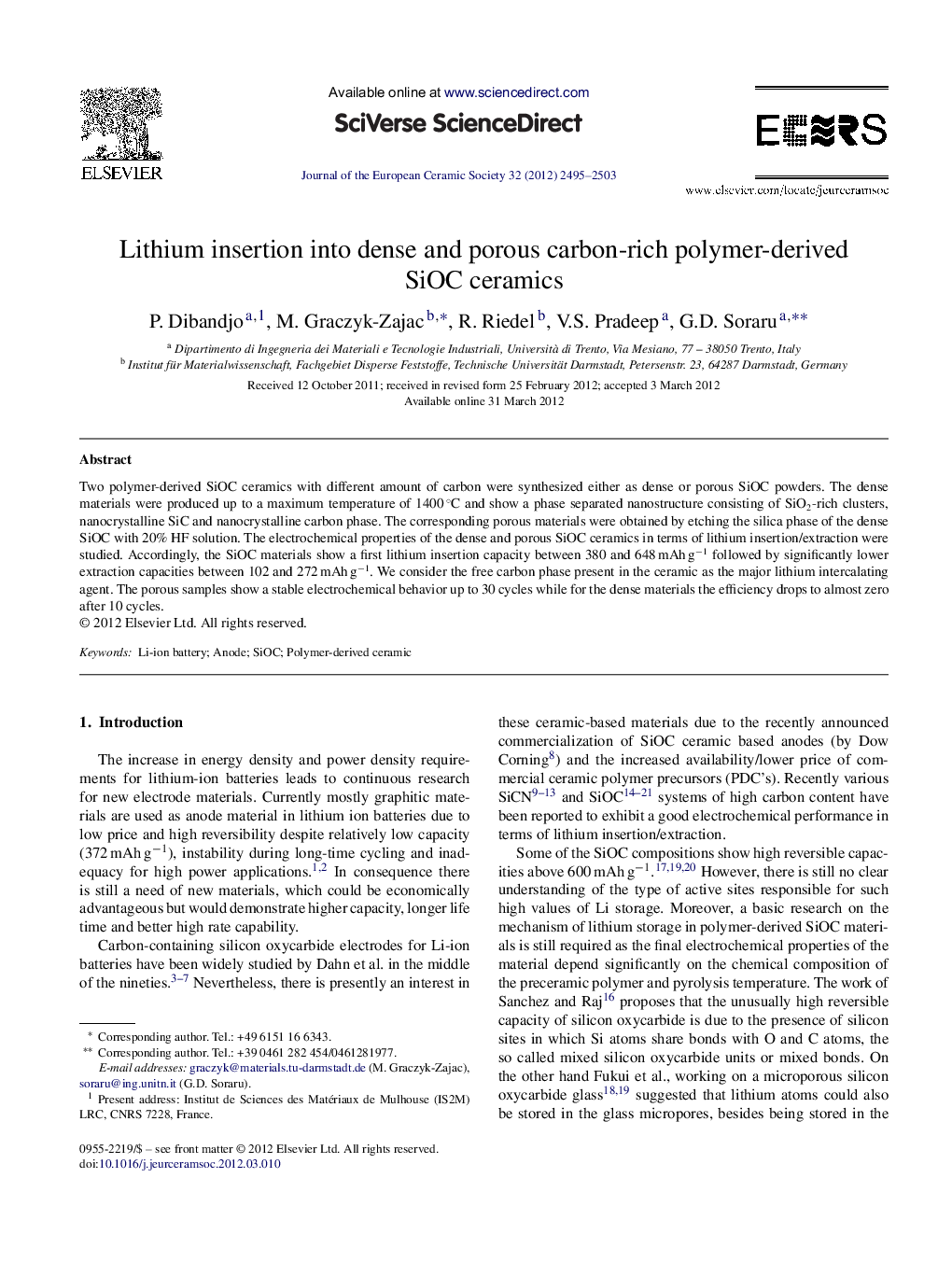| Article ID | Journal | Published Year | Pages | File Type |
|---|---|---|---|---|
| 1475326 | Journal of the European Ceramic Society | 2012 | 9 Pages |
Two polymer-derived SiOC ceramics with different amount of carbon were synthesized either as dense or porous SiOC powders. The dense materials were produced up to a maximum temperature of 1400 °C and show a phase separated nanostructure consisting of SiO2-rich clusters, nanocrystalline SiC and nanocrystalline carbon phase. The corresponding porous materials were obtained by etching the silica phase of the dense SiOC with 20% HF solution. The electrochemical properties of the dense and porous SiOC ceramics in terms of lithium insertion/extraction were studied. Accordingly, the SiOC materials show a first lithium insertion capacity between 380 and 648 mAh g−1 followed by significantly lower extraction capacities between 102 and 272 mAh g−1. We consider the free carbon phase present in the ceramic as the major lithium intercalating agent. The porous samples show a stable electrochemical behavior up to 30 cycles while for the dense materials the efficiency drops to almost zero after 10 cycles.
